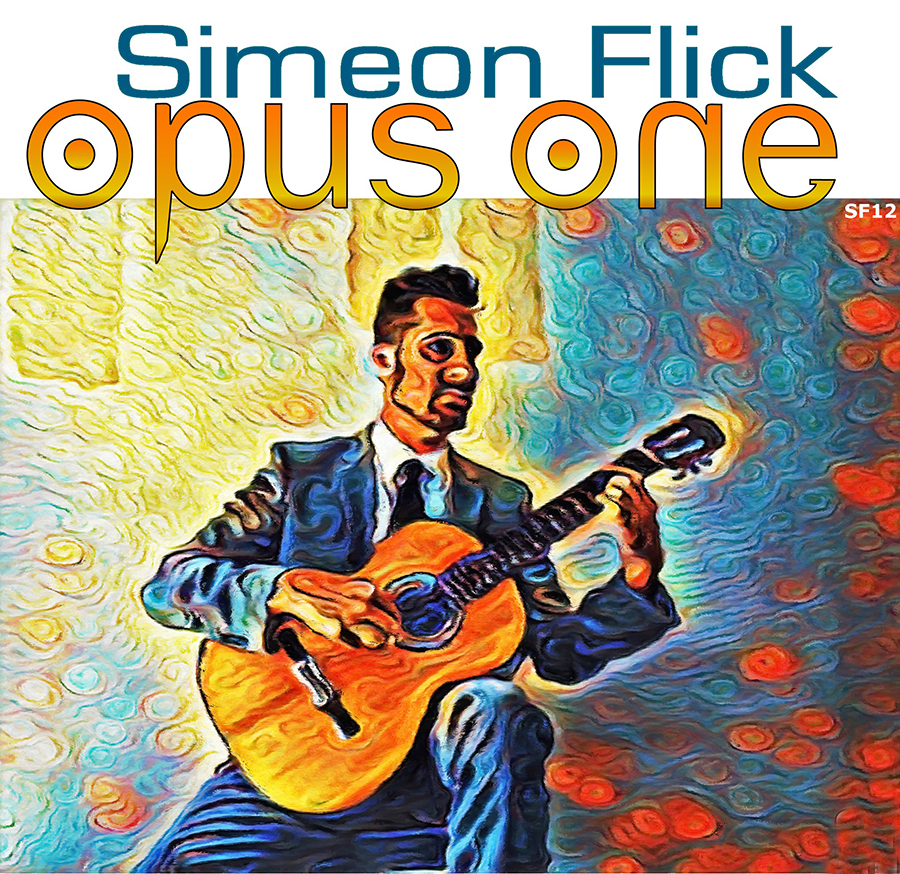
Most San Diegans know Simeon Flick for his excursions into different realms of pop music. Last year, the multi-instrumentalist released Dans Ta Visage, a collection of tunes that ranged from King Crimsonesque hard/alt/prog rock to more hip hop-influenced numbers. No matter the genre or subgenre, Flick’s pop music remains inspired, well executed, and pretty darn fun.
That would be enough for San Diego audiences, but—and what may be a surprise to many of his pop music fans—Flick is also a marvelous classical guitarist. Yes, the dude pumps nylon and knows his way around a Bach prelude or two.
In 2020, Flick released Scarlatti’s Greatest Hits, a collection of transcriptions of the Baroque composer’s compositions. With the disk, Flick may have proven that the guitar is a more apt instrument at interpreting Scarlatti than the piano. Now, Flick has released another disk, Opus One, for classical guitar. This time, the disk is filled with compositions Flick penned himself. The result is, from beginning to end, a great success.
Flick chose the guitar’s Key of Great Resounding, E major, for his “Capriccio No. 2.” The Capriccio melds and contrasts a classical theme, one that may have been heard in the 19th century, with a 20th century pop/jazz/rock modal interlude in the line of Van Morrison’s “Moondance” or the Doors’ “Riders on the Storm.” Reminiscent of Enrique Granados and Isaac Albinez, “Reverie” continues the 19th century classical theme and clearly taps into the Iberian roots of the guitar’s heritage.
Three Contemplations: “Forest,” “Mountain,” and “River” are at different times pensive, impressionistic, and majestic. Flick uses hallmarks of the classical guitar—absolutely huge open chords and beautiful, ringing harmonics—as he expresses the differing moods of the earth-centered trio. Listening to “River,” I was pleased with the impressions of flowing water, whirlpools, cataracts, eddies, and rapids.
Perhaps my favorite compositions on the disk are “Capriccio no. 1 in E minor ‘The Acrobat’” and “Desert March.” The whole purpose of classical guitar—the reason God put the instrument on the Earth and the reason He waited a LONG time before He let us have amplifiers—is clarity and beauty. In contrast, Flick uses a rough, quick, exciting staccato in the capriccio. The effect is intriguing and engaging. “Desert March” may be the most “modern”-sounding composition as it builds hypnotically on a simple, four quarter note ostinato.
The next to last composition on the disk is “Pentultimatum in F# minor,” another ringing guitar key. Here, Flick contrasts an ambitious chordal backbone with flights of single note runs. “Blues a la Ray” rests on an evocative mixolydian mode, the sort of “On Broadway” sound that the British invaders relied on when they overtook these American shores generations ago. Bluesy slides compete with those larger than life classical guitar chords. The tune even swings for a bit.
Recorded at Blue Chair Studio in La Mesa, all the sounds of the classical guitar are well captured, from the full timbre of the bass strings to the very high harmonic notes. We even get the icing on the cake for classical guitar: finger noise. Simeon Flick’s Opus One is one of the best classical releases I’ve heard in the last two or three years, earning the disk a well-deserved two thumbs up.

